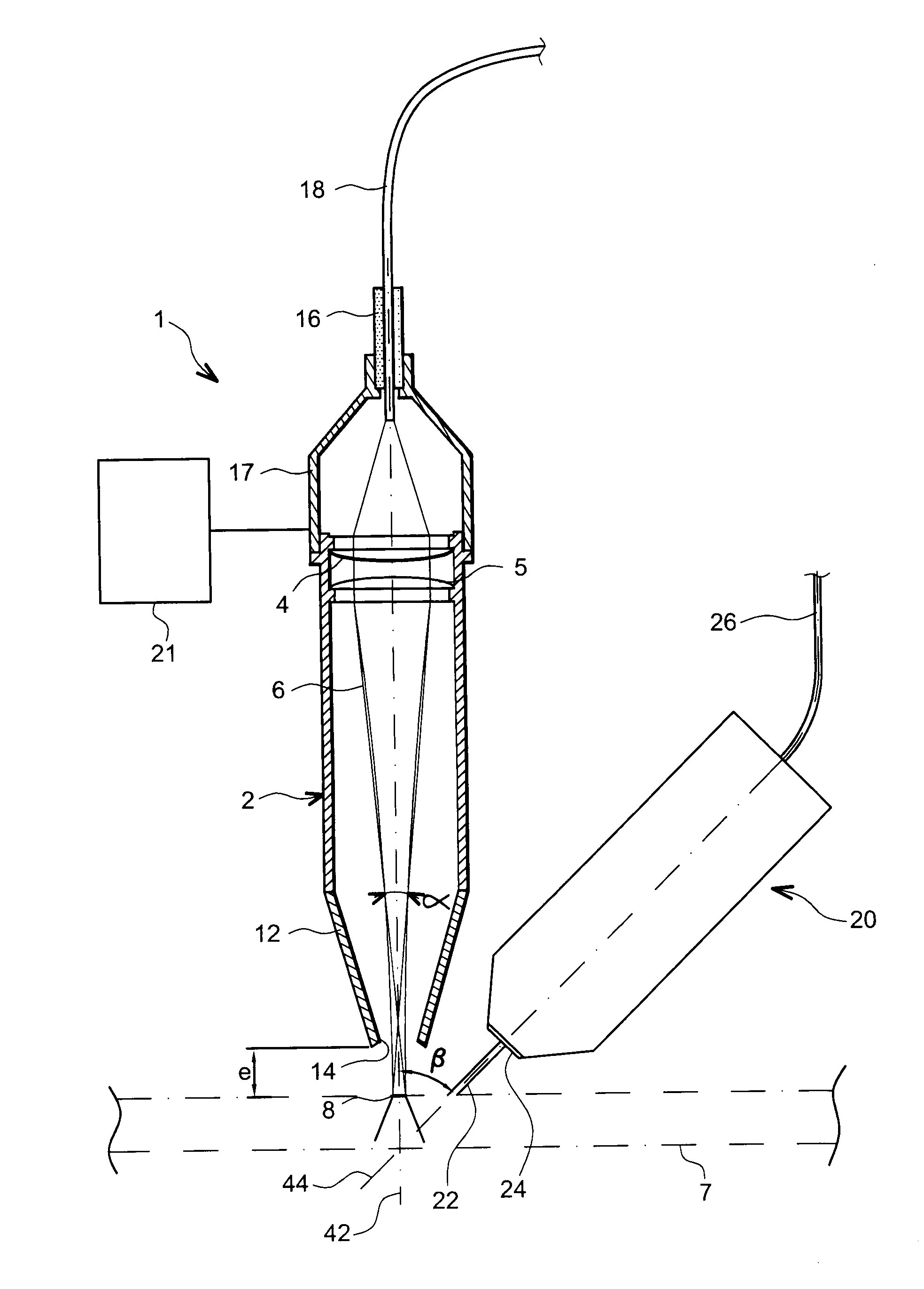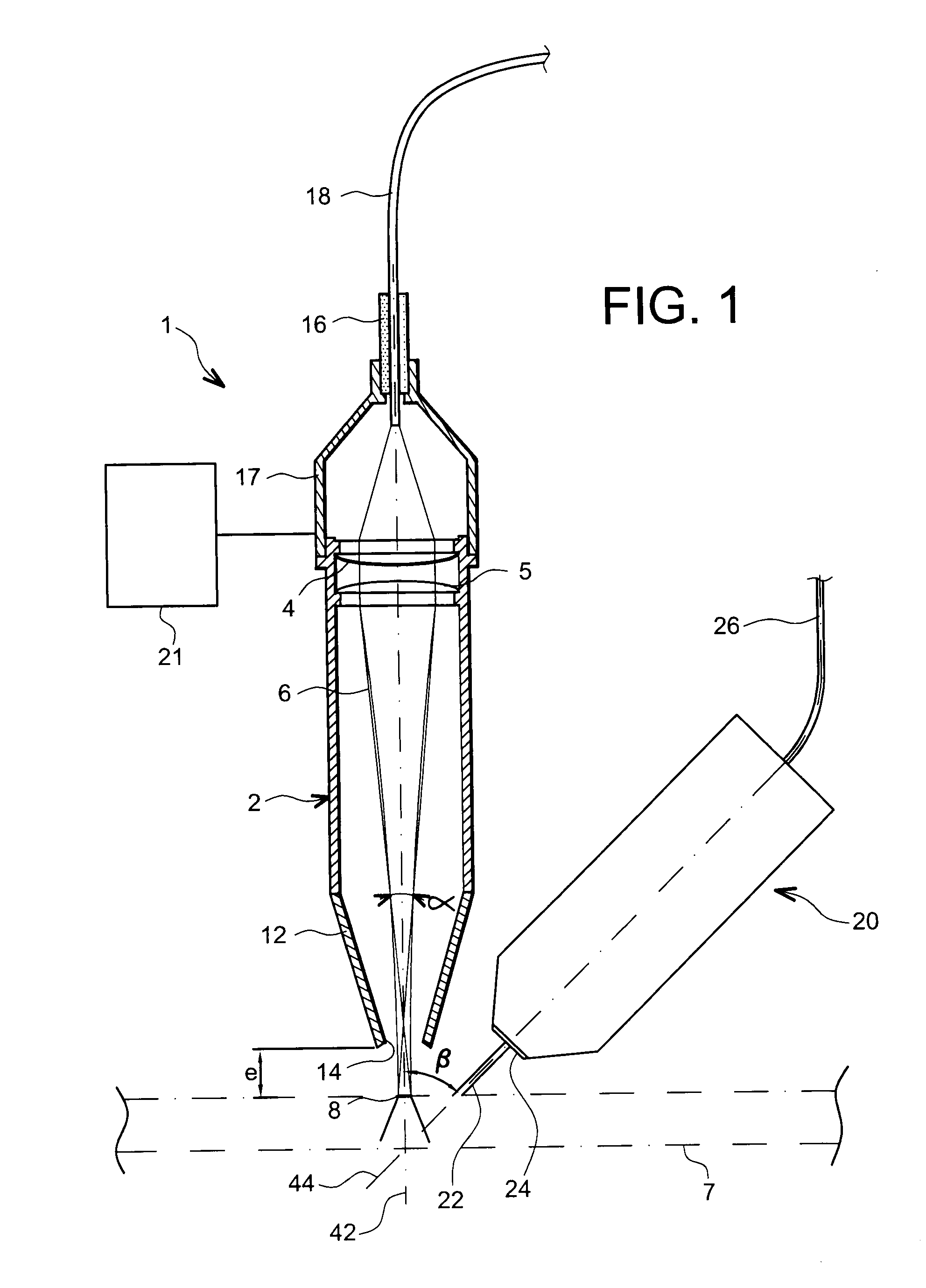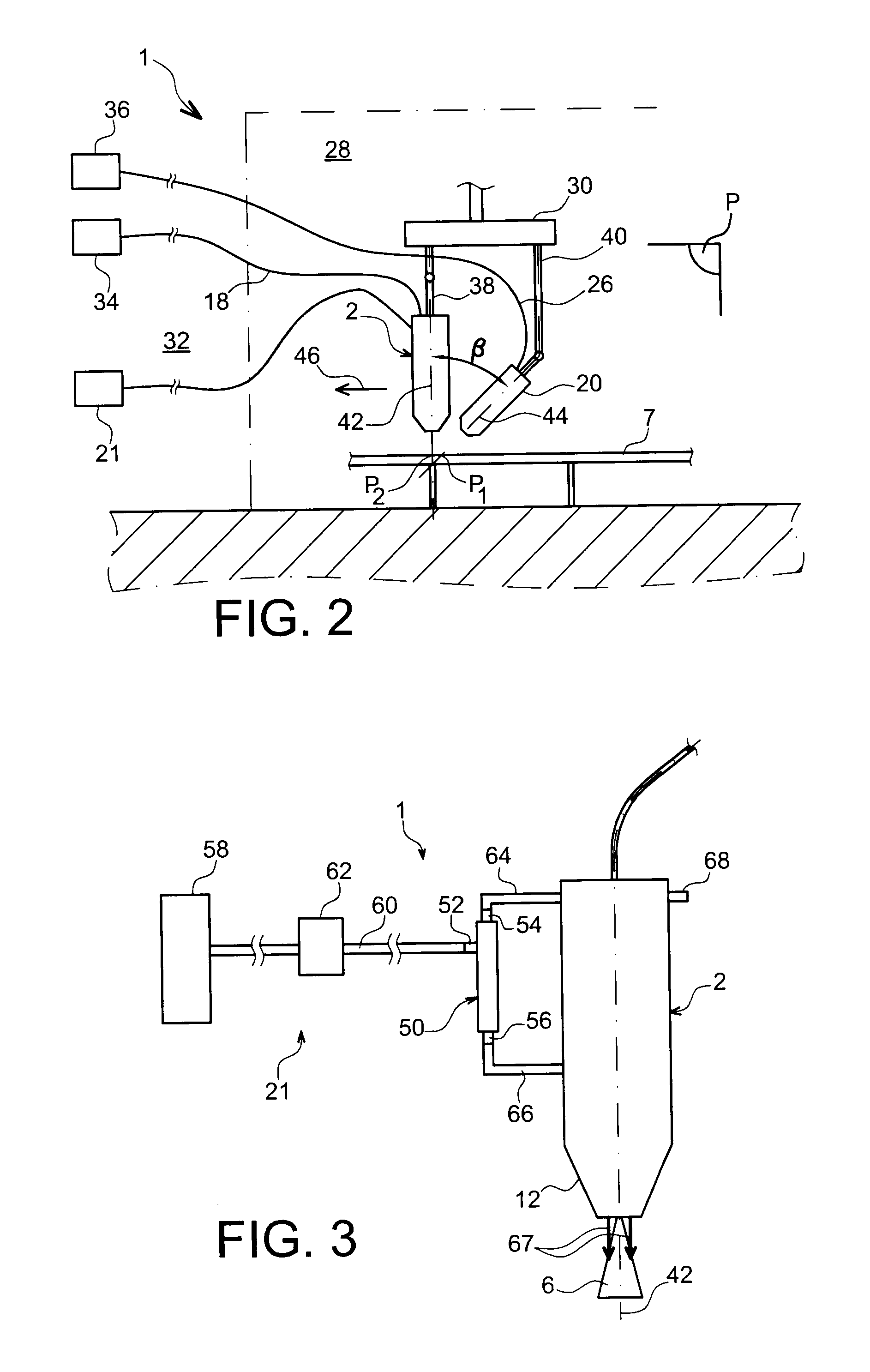Method and Installation for Laser Cutting/Welding
a laser cutting/welding and installation method technology, applied in lasers, laser construction details, laser cooling arrangements, etc., can solve the problems of limiting water cooling, difficult implementation of water cooling devices for some applications, and possible leakage of water pipes, so as to improve the expulsion of particles, increase the cutting/welding performance, and facilitate the supply of vortex tubes
- Summary
- Abstract
- Description
- Claims
- Application Information
AI Technical Summary
Benefits of technology
Problems solved by technology
Method used
Image
Examples
Embodiment Construction
[0041]In reference to the figures, it will be described a laser cutting / welding installation 1 of the Nd-YAG laser type, chosen in particular due to the advantages related to the transport of a laser beam 6 by optical fibers or also due to the advantages with regard to the possibility of having a better interaction between this laser beam 6 and a piece to be cut / welded (referenced 7). Let us note, however, that it would also be quite suitable to use a CO2 laser to implement the invention.
[0042]The invention is designed to be used for pieces of varied thicknesses, and more specifically for pieces having thicknesses greater than approximately 50 mm and which can exceed 100 mm. In any case, the invention proposes a laser cutting / welding device for pieces having significant thicknesses, the limited commonly allowed by those skilled in the art being 10 mm.
[0043]Likewise, the power delivered to the device 1 is between approximately 4 and 6 kW, this value interval corresponding to the powe...
PUM
| Property | Measurement | Unit |
|---|---|---|
| inlet temperature | aaaaa | aaaaa |
| inlet temperature | aaaaa | aaaaa |
| temperatures | aaaaa | aaaaa |
Abstract
Description
Claims
Application Information
 Login to View More
Login to View More - R&D
- Intellectual Property
- Life Sciences
- Materials
- Tech Scout
- Unparalleled Data Quality
- Higher Quality Content
- 60% Fewer Hallucinations
Browse by: Latest US Patents, China's latest patents, Technical Efficacy Thesaurus, Application Domain, Technology Topic, Popular Technical Reports.
© 2025 PatSnap. All rights reserved.Legal|Privacy policy|Modern Slavery Act Transparency Statement|Sitemap|About US| Contact US: help@patsnap.com



